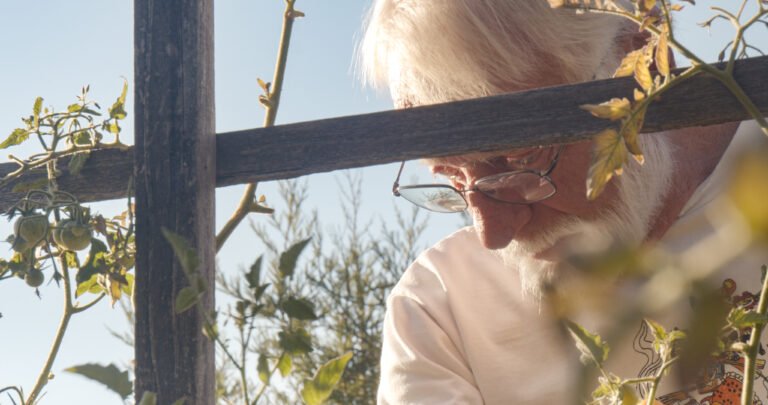A few weeks into editing On Goat Farming, I noticed myself whispering the dialogue in sync with the footage. “And by springtime, the grass will be up to here, and the chickens will destroy it once again. …Once again. …Once again.” The images and sounds of the film had filtered through my brain so many times, they’d turned to mush. I couldn’t feel the edit anymore. A few days ago I hit that same wall with On Homesteading.
Jim and Sharon, our main subjects, speak, but I’ve stopped hearing them. I desperately need fresh eyes on the project. That’s why, later this week, I’m driving up to South Lake Tahoe to drop the film in the lap of my producer, Sam Garaygay. I plan to let her wrestle with the edit while I lie on the couch in her parents’ homey cabin, staring at the ceiling.
We went through a similar process with On Goat Farming. Sam would sit at the computer, shaping scenes while I lay on the couch, groaning over the death of my creative spirit and the vision I once had. Then she’d show me what she’d done, and suddenly, I’d spring into action, eager to overhaul–destroy–her hard work. It was a rewarding creative process for both of us, I assume. **Note: Neither On Goat Farming nor On Homesteading would exist without the remarkable efforts of Samantha Garagay, a talented, resourceful, and dedicated producer. I would be lost without her.
The current creative crisis we face feels like the inverse of what we faced on the goat farm. Back then, the problem was overabundance—days spent overwhelmed by hours of footage, nearly 400 pages of interview transcripts, and far too many potential directions for the film to take. Sam and I were drowning in it, relying on friends to watch and help us focus the story. The process became one of paring down, stripping away ideas and narratives that, though they felt important at the time, were ultimately extraneous.
When you only have fifteen minutes to tell a story, it’s striking what makes the cut and what doesn’t. Before we even started filming On Goat Farming, I knew the main focus would be our subject’s first few months on the farm. During those early weeks, Annie and the other farmhands were left alone while the farmer went on his annual tropical South American vacation. While he was away, the farm faced an outbreak of walking pneumonia—a barely noticeable illness for our inexperienced goat farmers. Annie often described the dread of entering the barn in those days, always fearing they’d find another goat dead on the floor.

The dramatic accounts of death seemed crucial to our film. But after weeks of working the story, massaging it to the right mood, pace, and placement, it was clear that it sat like a log in the middle of our story. We threw the whole thing out, and the film is better for it.
It was a challenge to cut the fat, to accept that entire days of filming—at farmers’ markets and during milk deliveries—wouldn’t serve the narrative of our fifteen-minute film. We had to ruthlessly slice away sections on arts and crafts, even cutting whole animals from the story. No pigs, no cats, and no Manny—Annie’s rescue dog. On Goat Farming was whittled down from something sprawling to something focused and personal.
Now, with On Homesteading, the problem is reversed. We shot over just two days, and the subjects barely left their living room. The challenge is stretching what little footage we have, squeezing scenes out of the thinnest premises. It’s tempting to go back and film more, to fill in the gaps, but I keep reminding myself that the real test is making something compelling with what little we have. The more constraints, the more creativity we’re forced to bring to the table. At least, that’s what I tell myself.
The struggle, though, is real. For now, it’s Sam’s problem. I’ll simply lie on her couch, staring up at the ceiling, and sigh.
In other news, I sat down with our composer for On Goat Farming to discuss the upcoming publication of the film’s soundtrack and the musical direction of On Homesteading. It often surprises people to learn that On Goat Farming features an original score. Our subjects were equally astonished, and deeply moved, that someone had taken the time to write a score for their lives. Keigin Tosh and his collaborator Lucas Tammariello created an invaluable contribution; their beautiful accompaniment infuses the film with a life it would otherwise lack.
As we approach our October 1st deadline for On Homesteading, Carson Bennett and I are already turning our attention to new projects. While I remain in Northern California looking into the movements of a small group of El Dorado County Secessionists, Carson is preparing to meet with the leader of a commune near the Oregon border. Details are still under wraps but stay tuned for updates
– Nathan





